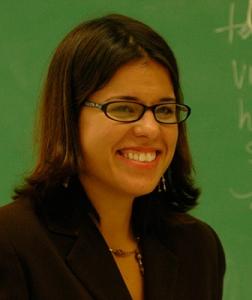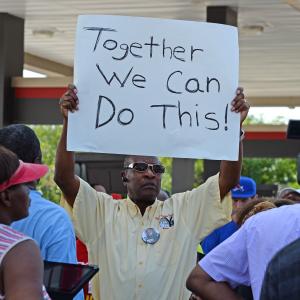
Dr. Mayra Lopez-Humphreys is a native New Yorker, professor, and pastor with more than 16 years of community engagement.
As an assistant professor of the undergraduate social work department at Nyack College, she has taught courses in diversity, social welfare policy, and field practice. In the social work arena, her research interests include critical multiculturalism and restorative practices. She has co-presented at the Society for Social Work Research on the role of sex in perceptions of discrimination among Dominican immigrant women, and at the National Conference on Race & Ethnicity, where she presented on the relational-cultural model with culturally diverse student populations. Mayra has co-authored a number of peer-reviewed scholarly articles, including “The Social Construction of Client Participation: The Evolution and Transformation of the Role of Service Recipients in Child Welfare and Mental Disabilities.”
Her practice/organizational leadership experience has centered on youth development and community organizing. Mayra has designed a number of asset-based programs that focus on the fostering and integration of participants’ social, spiritual, and cultural capital. In 2002, she was presented with The Children’s Aid Society Excellence Award for her leadership in program innovations and partnerships with immigrant families.
In the Harlem community, she is currently involved in the development and research of a Community Sustainable Kitchen (CSK). The CSK offers affordable, healthy, locally grown meals, while also facilitating the social benefits of preparing and sharing group meals.
Mayra is also the associate pastor at Metro Hope Covenant Church, a multiethnic church that meets in Harlem’s historic National Black Theater. Metro Hope is part of a larger church movement with a heart for the city, drawing artists and young families and professionals from Greater Harlem and the metro area. It is Mayra’s continual privilege and passion to journey with emerging generations as they work through their faith in a culture constantly challenging the church to be the church.
Posts By This Author
An Invitation to Disruption: A Call to White Churches
It was July 19, 2013, and we were leaving New York City for a spiritual retreat, six days after a Florida jury found George Zimmerman “not guilty” in the death of Trayvon Martin. The sadness, anger, and weariness was well worn on the liturgies, prayers, and preaching of many of the churches in our Harlem neighborhood.
We found ourselves joining local church leaders and a few pastors in a conversation about justice that would eventually make its way toward a broad range of matters: the gay rights of questioning teens, clean water for children in Africa, and many of the frequent places conversations go with folks who are concerned with “loving our neighbor.” And so we sat, we listened, and were genuinely moved to openly share about the challenges and opportunities that have come with cultivating safe spaces for GBLT folks in our church community. TOGETHER we also inspired one another as we offered our collective experiences with integrating the arts in fundraising for international relief efforts.
And as Jose and I sat, listened, and shared TOGETHER, we found ourselves with heavy hearts waiting …“Would the conversation broach the tragedy of Trayvon Martin?” It didn’t.
And as we sat TOGETHER in sacred solidarity with compassionate, justice-minded pastors, who happened to be white, somehow we found ourselves feeling quite alone. So we mustered the courage to ask, “How have your churches responded to the Trayvon Martin verdict?” My question was met with silence. The silence that met us did not betray aloof or timid spirits, but rather uncertainty about whether their one voice could really make a difference, or that somehow they did not have the right to “speak on behalf” of brown and black realities.
Silence: A Path to Action
I had such a hard time packing for my weekend away — cramming my bag with a stack of contemplative practice books, an anthology of my personal prayer journals, candles, an array of writing of instruments, and an iPod fully loaded with chanting monks and Hillsong worship songs. What does one take to a three-day silent retreat? Apparently a lot of noise.
My husband I were in the throes of church planting in Harlem. Our commitment to reimagining church not as a building, but as an incarnational community living out the Gospel of Jesus Christ had left our calendars fully loaded with “to do” lists for neighborhood barbecues, marches against “stop and frisk” laws, and prayer circles that met in our home.
And I was tired.
Jazz Fusion — Like It Or Not
Jazz is an embodiment of creative tension; it is essentially a medium that is expressed through creativity and change. It’s also a wonderful metaphor for what my life often feels like. There is beauty that often emerges from the tensions of life’s unpredictable rhythms. I have never resonated so deeply with this idea than in the last five years since I became a parent.
When I was pregnant with my son Javier, I read stacks and stacks of books on parenting: nurturing your child, building your child’s faith, raising a baby in the city, saving for college, and organic cooking — you name it, I read it. I conducted informal focus groups with all of my parent friends. I was prepared (I think you already know where this is going…). I was so proud of myself, I gave birth to this beautiful boy and I even graduated with (informal) honors from the nursing class at the hospital. So there I am, confidently pushing my newborn in his new stroller out of the Lenox Hill hospital, when I see the nurse smiling at me. I naturally think she is just as smitten with this beautiful baby boy of mine. But then she stops me and with a tone superiority tells me that my baby is backwards in the stroller: “you need to turn him around.” And it was at that moment that I realized I had no idea of what I was doing and that this creative process of raising a child was going to also going to involve a lot of not knowing, unlearning, and a surrendering of what I could not control or anticipate.
Why Our Presidential Candidates Need a Manicure
I was groomed in a Latino home where nail salons were viewed as rites of passage for becoming a senorita — growing young lady. Sometimes when I’m looking for some TLC, I head to my local nail salon in East Harlem. I could go to a more upscale salon, but here at Pretty Nail Salon, is where I want to be — connected to a neighborhood of ladies who have utilized storefront nail salons, beauty parlors, and hair-braiding places as makeshift therapeutic spaces where counsel and support is just as paramount to looking beautiful.
I have also discovered that nail salons are burgeoning places of policy concerns. Pretty Nail Salon has provided me with an informal education on how social policy affects the everyday day lives of working class folks. Our presidential candidates could also benefit from an appointment at Pretty Nail Salon, to listen to the local narratives and deepen their understanding of how social policy is affecting the lives of the urban poor and working class.



